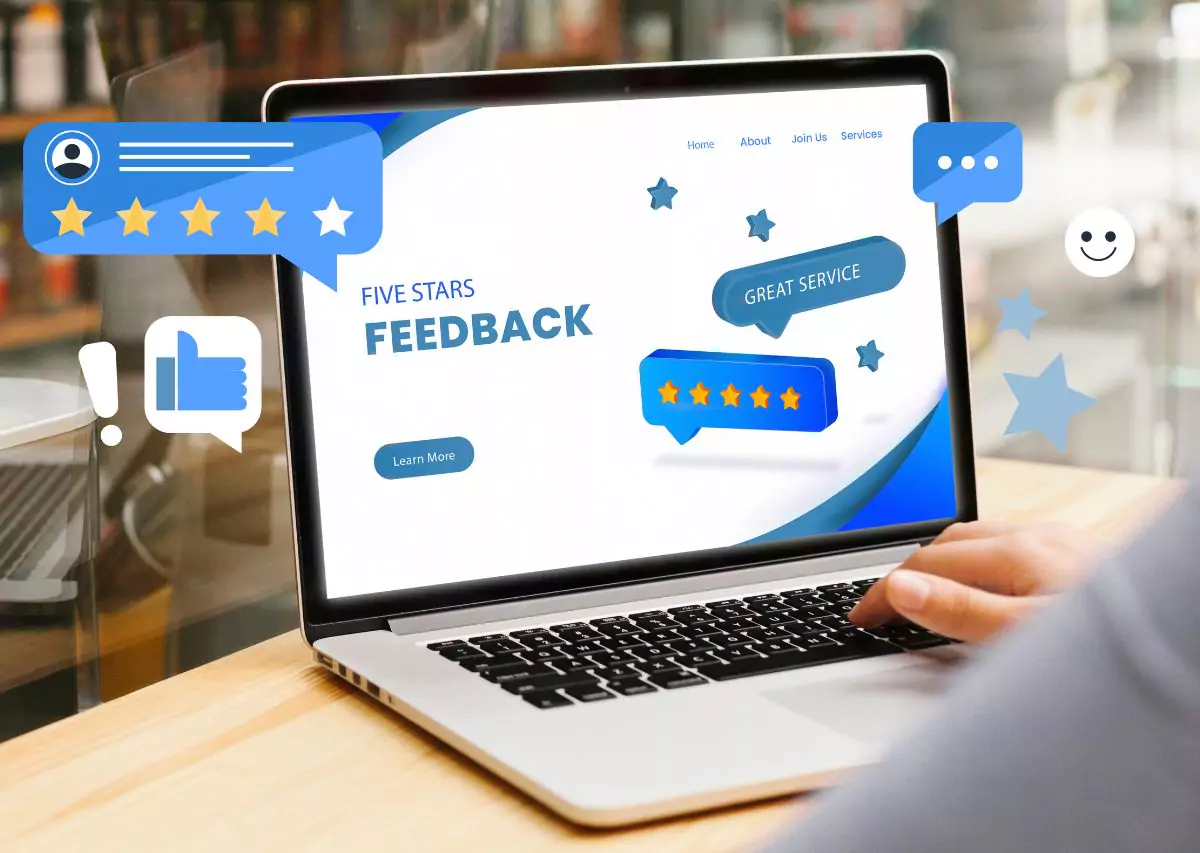How to Run a Digital Loyalty Program Effectively
Excerpt- Learn how to run an effective digital loyalty program that boosts customer engagement, retention, and lifetime value. Discover key features, implementation steps, common challenges, and how digital platforms can help deliver seamless loyalty experiences.
On this page
What are digital loyalty programs
Digital loyalty programs are a modern evolution of traditional loyalty schemes. Instead of relying on physical cards or punch cards, these programs leverage digital rewards platforms to offer a seamless and personalized experience. Customers can now accumulate and redeem rewards effortlessly, all while enjoying a more interactive and engaging relationship with the brand.
Research from the Verde Group cited in the Harvard Business Review shows that when "loyal members encounter service failures—shipping issues, problems with returns, stockouts and the like—they get more upset than customers who are not members of the program." Ensuring your loyalty program is easy to use and straightforward could help ensure these customer experience frustrations don't arise.
How does digital loyalty program enhance customer experience
Digital loyalty programs offer a range of benefits for both businesses and customers. Here are five of the most important advantages:
1. Increased customer retention
One of the primary benefits of digital loyalty programs is their ability to enhance customer retention. By offering exclusive rewards, personalized incentives, and a sense of exclusivity, these programs encourage customers to remain loyal to a particular brand.
Repeat business is a key driver of revenue, and loyal customers are more likely to choose a familiar brand over competitors.
2. Enhanced customer engagement
Digital loyalty programs foster ongoing engagement with customers. Through personalized offers, interactive features, and gamification elements, these programs keep customers actively involved with the brand.
Increased engagement not only strengthens the emotional connection between customers and the brand but also provides more opportunities for businesses to communicate and build a relationship with their audience.
3. Data-driven insights
The collection and analysis of customer data are integral components of digital loyalty programs. Businesses can gain valuable insights into customer behavior, preferences, and purchasing patterns.
This data-driven approach allows companies to make informed decisions, refine marketing strategies, and tailor their offerings to better meet the needs of their customers.
4. Competitive advantage
Implementing a digital loyalty program can provide a competitive advantage in the market. In an era where customer experience is a key differentiator, offering a well-designed loyalty program sets a brand apart from its competitors.
Customers are more likely to choose a business that provides additional value and rewards for their loyalty, giving companies with effective loyalty programs a distinct edge.
5. Boosted customer spending
Digital loyalty programs often lead to increased customer spending. As customers work towards earning rewards or reaching loyalty tiers, they are incentivized to make additional purchases.
This boost in spending contributes directly to the company's revenue and profitability. Moreover, the feeling of being rewarded for their loyalty can create a positive association, encouraging customers to continue choosing the brand for their future needs.
6. Enhanced customer lifetime value (LTV)
Utilizing digital loyalty programs significantly boosts a business's customer lifetime value (LTV). Even a modest 7% increase in brand loyalty can result in an impressive 85% growth in LTV.
7. Seamless omnichannel experiences
Digital loyalty schemes enable businesses to provide seamless experiences across online platforms, mobile apps, and in-store interactions. Customers can easily access and engage with their loyalty accounts, view rewards, and redeem offers regardless of their chosen channel.
A seamless integration ensures consistency and convenience, allowing customers to engage with the program in a way that suits their preferences.
8. Personalized offers and rewards
One-size-fits-all approaches no longer suffice in today’s customer-centric landscape. Digital loyalty schemes empower businesses to offer personalized offers and rewards based on individual customer preferences, purchase history, and behavior patterns.
Businesses can tailor incentives that resonate with each customer, increasing the likelihood of engagement and satisfaction. Personalization fosters a deeper connection between customers and the brand, leading to heightened loyalty and advocacy.
9. Real-time rewards and instant gratification
Customers no longer need to wait for physical vouchers or accumulate points over an extended period.
Digital programs enable businesses to instantly provide rewards, discounts, or exclusive offers directly to customers’ digital wallets or accounts, creating immediate value and delight. This instant gratification contributes to a positive customer experience and reinforces the perception of fair value.
10. Gamification and interactive elements
Digitization opens doors to incorporating gamification and interactive elements within loyalty schemes. Businesses can enhance the overall customer experience by infusing aspects of fun and engagement.
Gamification features like progress bars, challenges, and badges can motivate customers to participate actively in the loyalty program, increasing their engagement and enjoyment.
11. Enhanced customer service and support
Digital loyalty schemes often come with integrated customer service and support features. Customers can easily access assistance through chatbots, online support channels, or dedicated loyalty program helplines.
The accessibility ensures customers receive prompt and personalized service, resolving any issues or inquiries they may have regarding their loyalty program experience.
Key features of digital loyalty programs
Digital loyalty programs have become increasingly popular as businesses seek to engage and retain customers in the digital age. Here are key features of digital loyalty programs:
- Digital accessibility: Loyalty programs are often accessible through dedicated mobile apps or websites, allowing customers to easily track and redeem rewards using their smartphones or other digital devices.
- User-friendly interface: Digital loyalty programs feature user-friendly interfaces, making it easy for customers to navigate, view their points or rewards, and participate in various activities.
- Multi-channel integration: Loyalty programs often integrate with multiple channels, such as in-store purchases, online shopping, and mobile transactions, providing a seamless and consistent experience across different touchpoints.
- Personalization: Digital loyalty programs leverage customer data to create personalized experiences. This may include personalized offers, recommendations, and content based on individual preferences and behavior.
- Points and rewards system: Customers earn points through various actions, such as purchases, referrals, or social media engagement. Loyalty programs offer flexibility in redeeming points for rewards, including discounts, free products, or exclusive experiences.
- Gamification elements: To enhance engagement, loyalty programs often incorporate gamification elements, such as challenges, badges, or levels, creating a more interactive and enjoyable experience for users.
- Push notifications and communication: Loyalty programs use push notifications and other communication channels to update customers on their point balances, special promotions, or upcoming events, keeping them engaged and informed.
- Social media integration: Loyalty programs often integrate with social media platforms, allowing customers to share their achievements, refer friends, and earn additional rewards.
- Data analytics and insights: Loyalty programs collect and analyze customer data, providing businesses with valuable insights into customer behavior, preferences, and trends. This data is often used to segment customers and tailor promotions or incentives based on specific groups.
- Feedback mechanism: Loyalty programs may include features for customers to provide feedback through surveys or reviews, helping businesses understand customer satisfaction and areas for improvement.
- Tiered loyalty levels: Some loyalty programs incorporate tiered structures, where customers can achieve higher levels of loyalty with increasing benefits and exclusive perks as they move up the tiers.
- Integration with payment systems: Loyalty programs may integrate with payment systems to facilitate seamless transactions, allowing customers to earn or redeem rewards during the checkout process.
How to implement digital loyalty programs
Implementing a digital loyalty program involves several key steps to ensure its success. Here's a how-to do it effectively:
1. Choose the appropriate loyalty platform
Choosing the right loyalty platform is crucial for the success of your digital loyalty program. Consider the following factors:
- Features and functionality: Look for a platform that offers the features you need, such as points accumulation, rewards redemption, and customer segmentation.
- Integration: Ensure that the loyalty platform can integrate seamlessly with your existing systems, such as your point-of-sale (POS) system or e-commerce platform.
- Scalability: Select a platform that can grow with your business. It should be able to handle an increasing number of customers and transactions.
- User-friendly interface: The platform should be easy for both you and your customers to use. A simple, intuitive interface can encourage more participation.
2. Opt for the suitable system for your loyalty programs
Once you've chosen a loyalty platform, you'll need to implement it into your existing systems. This may involve:
- Integration with POS systems: If you have a physical store, ensure that the loyalty program seamlessly integrates with your point-of-sale system to track purchases and award points.
- E-commerce integration: For online businesses, integrate the loyalty program with your e-commerce platform, ensuring a smooth customer experience during online transactions.
- Mobile app development: If you decide to have a mobile app as part of your loyalty program, invest in its development to make it user-friendly and functional.
3. Pick the right rewards for your loyalty program
Choosing the right rewards is crucial to incentivize customer participation. Consider the following:
- Understand your audience: Know your target audience and choose rewards that appeal to them. This could include discounts, free products, exclusive access, or early releases.
- Tiered rewards system: Implement a tiered system where customers can unlock higher-level rewards as they accumulate more points. This encourages continued engagement.
- Personalization: Tailor rewards to individual customer preferences whenever possible. This personalization can enhance the customer experience.
4. Adopt a 'Reward-All' Approach
For brands aiming for a substantial increase in their customer lifetime value, it's crucial to provide a diverse array of rewards that serve as incentives throughout every phase of the customer journey. Whether it's during acquisition, activation, growth, retention, or reactivation, employing promotions and rewards enables the establishment of a robust relationship with customers at each interaction point in their journey.
For example, the Beauty Insider Program by Sephora exemplifies a comprehensive approach to rewards, providing members with savings, product samples, and exclusive event access.
This strategy allows customers to accumulate appealing benefits with each interaction. Sephora's tiered program, in particular, has garnered over 25 million loyal customers, with a substantial portion of sales and growth attributed to its top tier, the Rouge members.
5. Integrate referral capabilities into your loyalty program
Incorporating referral features into your loyalty program can yield remarkable results in boosting your Customer Lifetime Value (CLV). The referral aspect of your loyalty initiative not only expands your brand's visibility but also rewards your most devoted customers. Referred customers exhibit a 16% higher lifetime value and an 18% lower churn rate.
A notable example is Chase Bank, which has implemented an enticing referral program. Customers can earn $50 for each successful referral opening a checking account, with the potential to accumulate up to $500 annually.
This strategy encourages customers to extend their interactions with the bank, contributing to an increased customer lifetime value for the brand.
6. Tailor all your communication strategies
In optimizing your loyalty program, personalization serves as the crucial final element. Approximately 71% of consumers express frustration when their shopping experiences lack personalization. Failure to personalize interactions with customers can result in swift churn, significantly impacting efforts to enhance Customer Lifetime Value (CLV).
Conversely, engaging with customers in a personalized manner increases the likelihood of maintaining a lasting relationship with your brand.
Take Netflix, for instance, which leverages artificial intelligence, natural language processing (NLP), and machine learning to craft personalized experiences based on customers' content preferences.
This approach has enabled Netflix to consistently persuade customers to renew their subscriptions, leading to a minimal churn rate of only 2.4%.
7. Publicize your digital loyalty program
To ensure the success of your digital loyalty program, effective promotion is essential:
- In-store promotion: Use signage, banners, and staff training to promote the program to customers visiting your physical stores.
- Online promotion: Leverage your website, social media platforms, and email newsletters to inform online customers about the loyalty program.
- Launch campaigns: Create a launch campaign to generate excitement. This could include special promotions or bonuses for early program adopters.
- Referral programs: Encourage existing members to refer others to join the loyalty program by offering additional rewards for successful referrals.
By carefully planning and executing each of these steps, you can implement a successful digital loyalty program that engages customers and builds long-term brand loyalty.
Potential challenges in implementing digital loyalty programs
While digitizing loyalty schemes offers numerous benefits, businesses should be aware of potential challenges that may arise during implementation. Overcoming these challenges is crucial to ensure the successful adoption and execution of digital loyalty schemes.
Here are some common challenges businesses may face:
1. Technological infrastructure
Implementing a digital loyalty scheme requires a robust technological infrastructure to support seamless integration, data management, and real-time interactions. Businesses may encounter challenges in upgrading their existing systems or investing in new technologies to accommodate digitization.
Ensuring the infrastructure’s compatibility, scalability, and security can be complex and may require collaboration with IT teams and external vendors.
2. Data privacy and security
Digital loyalty schemes involve collecting, storing, and analyzing customer data. Protecting customer privacy and ensuring data security is paramount. Compliance with data protection regulations and implementing robust security measures to prevent unauthorized access or data breaches is crucial.
Businesses must establish proper data governance frameworks, educate employees on best practices for data privacy, and communicate transparently with customers regarding data usage and protection.
3. Customer adoption and engagement
Driving customer adoption and engagement in a digital loyalty scheme can be challenging.
Customers may need to adjust to new processes, technologies, or platforms. Clear communication, user-friendly interfaces, and comprehensive onboarding materials are essential to educate and encourage customers to participate in the digital program.
Furthermore, businesses must continuously engage customers through personalized experiences, relevant offers, and timely communication to maintain their interest and active participation.
4. Integration with existing systems
Integrating digital loyalty schemes with existing systems, such as point-of-sale (POS) systems, customer relationship management (CRM) platforms, or inventory management systems, can be complex.
Ensuring seamless data flow and synchronization between systems is crucial for accurately tracking customer transactions, rewards, and redemption. Collaboration between different departments and stakeholders, including IT, marketing, and operations, is essential to ensure smooth integration and minimize disruptions.
5. Change management and employee adoption
Implementing digital loyalty schemes requires change within the organization. Employees must understand the digital program’s benefits, processes, and functionalities to support and promote it effectively.
Comprehensive training, clear guidelines, and ongoing employee support are vital for successful implementation. Change management strategies should be in place to address resistance or reluctance to adapt to new processes and technologies.
6. Customer experience consistency
Maintaining a consistent and seamless customer experience across different channels and touchpoints can be challenging.
Customers expect a unified experience, whether they engage with the loyalty program through a mobile app, website, or in-store interactions.
Ensuring consistent branding, personalized offers, and synchronized data across all channels requires effective coordination and integration between various teams and systems.
Supercharge your digital loyalty schemes with Loyalife
We understand the importance of creating seamless, effective loyalty programs and delivering results. With Loyalife, you can easily create enticing offers digitally in a self-service mode.
Loyalife helps increase turnover by attracting and incentivizing customers with personalized recommendations that align with their preferences.
It also enables you to recruit new buyers by leveraging targeted promotions and rewards to expand your customer base. Furthermore, Loyalife empowers you to retain your customers by providing them with valuable and engaging loyalty experiences.
Contact our team of loyalty experts to explore how digital loyalty schemes can benefit your business and help you improve your customer experience.
Key takeaways
Digital loyalty schemes have redefined how businesses connect with their customers, combining personalization, convenience, and technology to deliver exceptional experiences. Here’s what makes them stand out:
- Personalized rewards: Tailor benefits to match customer preferences for a more engaging experience.
- Omnichannel reach: Engage customers seamlessly across apps, websites, and social media platforms.
- Real-time engagement: Use data-driven insights to refine loyalty strategies and stay relevant.
- Simplified management: Leverage digital tools for hassle-free program operation and scalability.
Digital loyalty schemes aren’t just a trend—they’re a necessity in today’s competitive market. By adopting these programs, businesses can build stronger relationships, foster brand advocacy, and achieve long-term growth. It’s time to embrace the digital transformation of loyalty and unlock its full potential for your brand.









